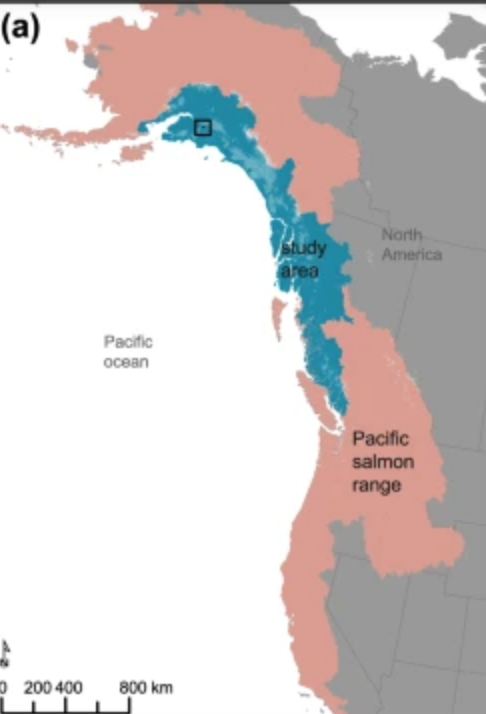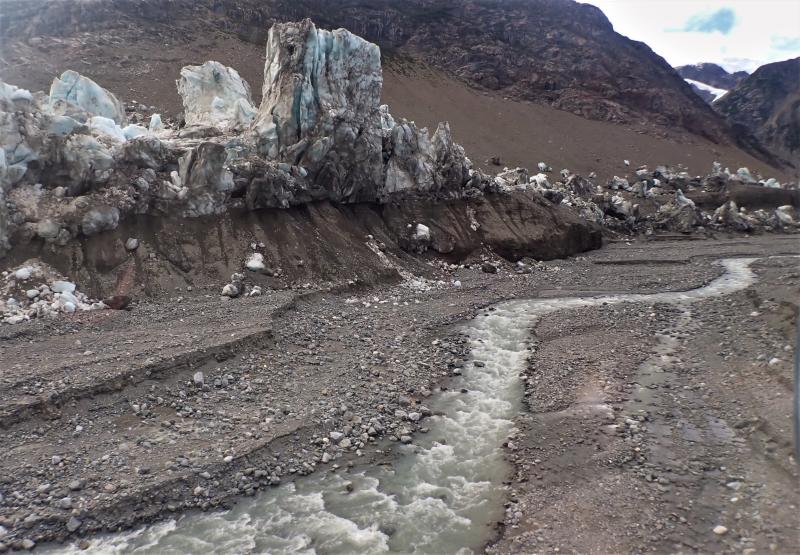Melting glaciers in Alaska and British Columbia could open up new stream habitat for Pacific salmon – conceivably almost equal to the length of the Mississippi River by 2100, under one scenario of “moderate” climate change.
But on balance a warming climate will continue to take its toll on salmon populations on the U.S. Pacific coast.
Researchers from Simon Fraser University in British Columbia and the NMFS Northwest Fisheries Science Center in Seattle, Wash., published their findings from modeling glacier retreat in the journal Nature Communications, looking at how new salmon spawning streams might appear as ice melts, bedrock gets exposed and new streams thread over the exposed landscape.
“We predict that most of the emerging salmon habitat will occur in Alaska and the transboundary region, at the British Columbia – Alaska border, where large coastal glaciers still exist,” lead author professor Kara Pitman of Simon Fraser University says in a NMFS summary of the findings.
The Gulf of Alaska sub-region could gain the most, with a 27 percent increase in salmon-accessible habitat by 2100. Once new streams stabilize, “salmon can colonize these areas relatively quickly,” according to NMFS.

Like many projections of climate change and fisheries, it’s another good news-bad news scenario.
The researchers stressed that as glaciers retreat, conditions in the Pacific Northwest and California will continue to decline, with warmer stream temperatures and lower flows.
In Washington state, life-cycle models conducted by the Northwest Fisheries Science Center projected that coastal king salmon, coho and steelhead populations in the Chehalis River basin would be significantly reduced without major habitat restoration, as would king salmon in California’s Sacramento River.
“Threatened Snake River spring/summer chinook salmon will also experience starkly lower survival rates during their years in the ocean in the future compared to now,” the agency says.
To the north, “this amount of new salmon habitat will provide local opportunities for some salmon populations,” according to Pitman. “On the other hand, climate change and other human impacts continue to threaten salmon survival—via warming rivers, changes in stream flows, and poor ocean conditions.”
And like the Pebble Mine saga, new Alaska salmon habitat in the future could set the stage for new land-use conflicts, the researchers note.
“Forecasting the location of emerging salmon habitat is imperative because, while declining glacier ice can present local opportunities for salmon, it is also creating new prospects for large-scale resource extraction industries such as mining, which have the potential to degrade these salmon habitat frontiers.” the authors wrote. “Understanding the timing and location of emerging salmon habitat frontiers throughout the Pacific Mountain ranges of western North America can inform forward-looking management decision-making and conservation planning.”
There are around 46,000 glaciers in the Pacific mountain ranges of North America, and 80 percent lie within the range of Pacific salmon, the authors wrote.
“These glaciers are rapidly declining in volume, thickness, and area, accelerated by recent anthropogenic climate warming. For example, between 2006 and 2016, glaciers in western Canada lost an average of 1 percent of their ice mass annually and are projected to lose up to 80 percent of their ice volume by 2100 in some regions.”







